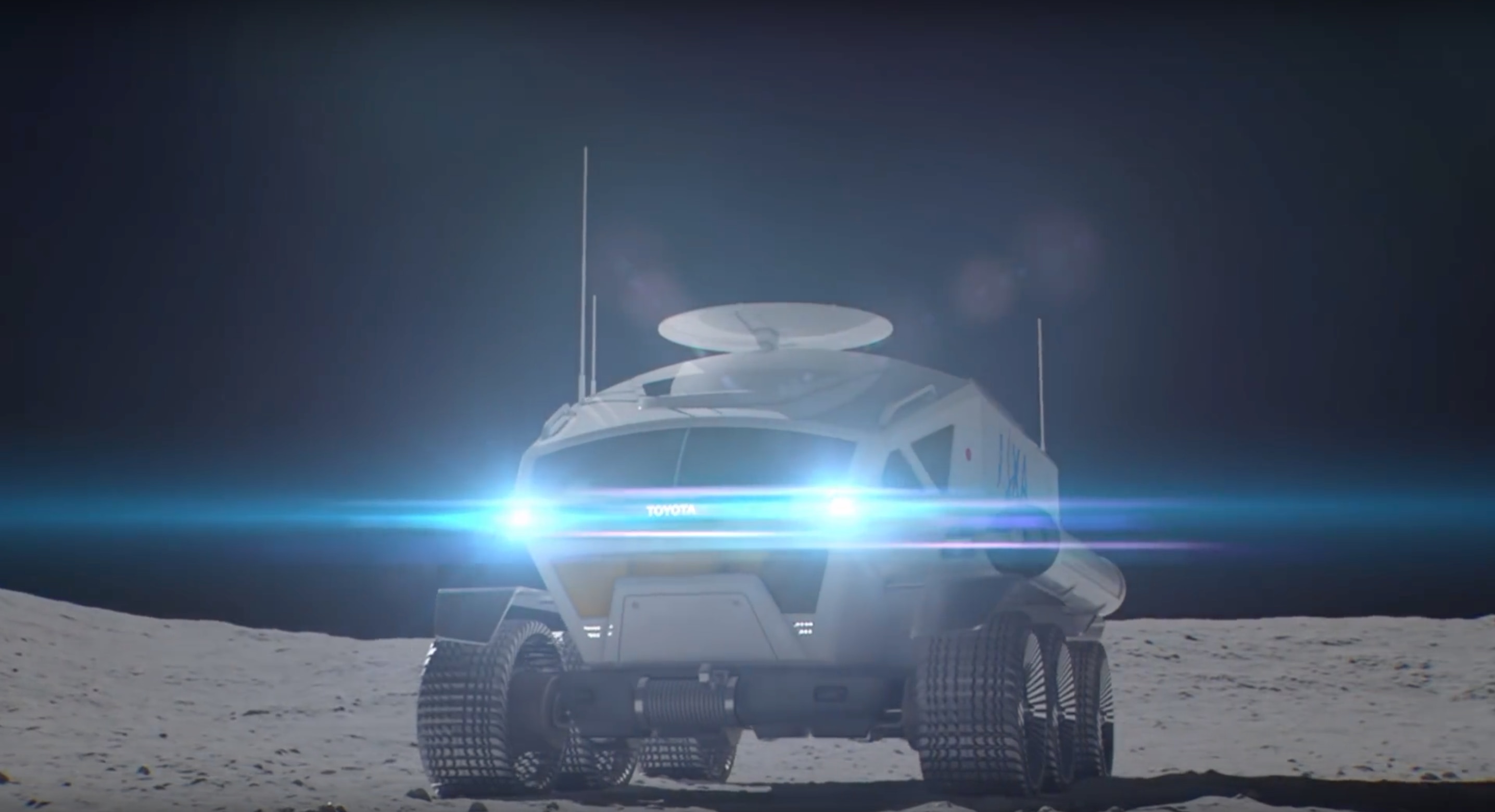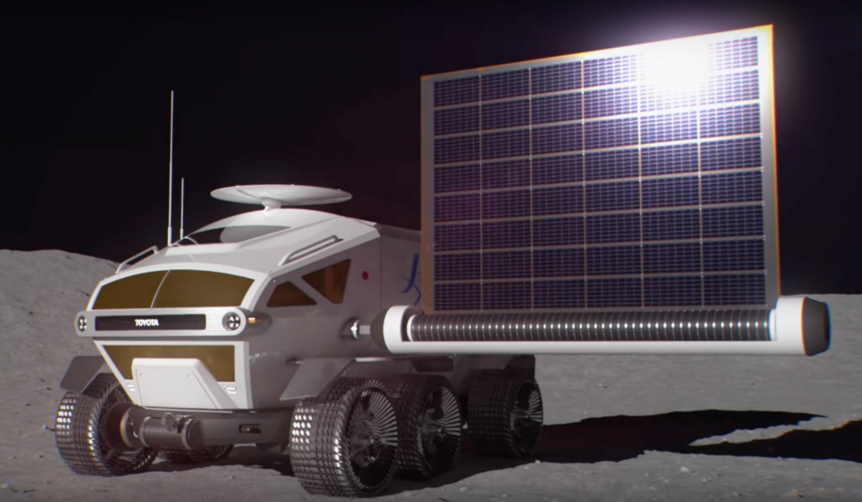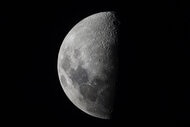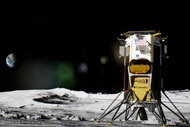Create a free profile to get unlimited access to exclusive videos, sweepstakes, and more!
Toyota's moon rover concept looks like the most awesome SUV in space

If you drive a Toyota, you probably don't think that the Japanese car company has anything to do with space ... well, think again.
Toyota had a brief encounter with the decommissioned shuttle Endeavor when it sent a pickup to help transport the spacecraft to the California Science Center back in 2012, but that was nothing. Now they plan to literally shoot for the moon with a pressurized rover. The concept, designed in collaboration with JAXA, was recently revealed at an international space symposium in Tokyo—and humans will ride this one without space suits.
It kind of looks like a futuristic SUV, but if you think icy roads or potholes are awful (not to mention accidents waiting to happen), this vehicle is going to have to put up with some really tough conditions on the moon.
“The mission will meet with environmental conditions including radiation and temperature challenges, as well as the fact that the mission will require driving over thousands of kilometers on the harsh physical surface of the moon,” said JAXA vice president and astronaut Dr. Koichi Wakata.
Wakata believes that Toyota’s advanced fuel cell technology, along with additional tech developed by the company, should be more than a match for what it encounters on the lunar surface. Hydrogen fuel cells have been used on rockets since 1965, and generate electricity from the chemical reaction between hydrogen and oxygen. The one Toyota plans to equip the rover with should power it for up to 1,000 km (about 620 miles) with each hydrogen tank refill.
Hydrogen and oxygen for the fuel cells will initially be sent to the moon with the rover upon launch, but it should be set for a while after that. The water resulting from the hydrogen-oxygen reaction is drinkable and can also be reused as coolant. Any lunar H2O the rover finds can be used as a backup energy source in case the rover runs low, because there are no refueling stations in space.
Toyota’s robotic explorer is supposed to run 10,000 km (about 6,200 miles) over the course of a 42-day mission. Never mind that daytime and nighttime on the moon each last for two weeks. Solar photovoltaic panels will use electrolysis, or the splitting of a water molecule into hydrogen and oxygen, to create fuel that will be stored and then used to generate enough electricity to keep the rover alive.
If this mission succeeds and we eventually end up with a hydrogen-powered society on the moon, maybe space SUVs will become a thing.
(via Toyota)















